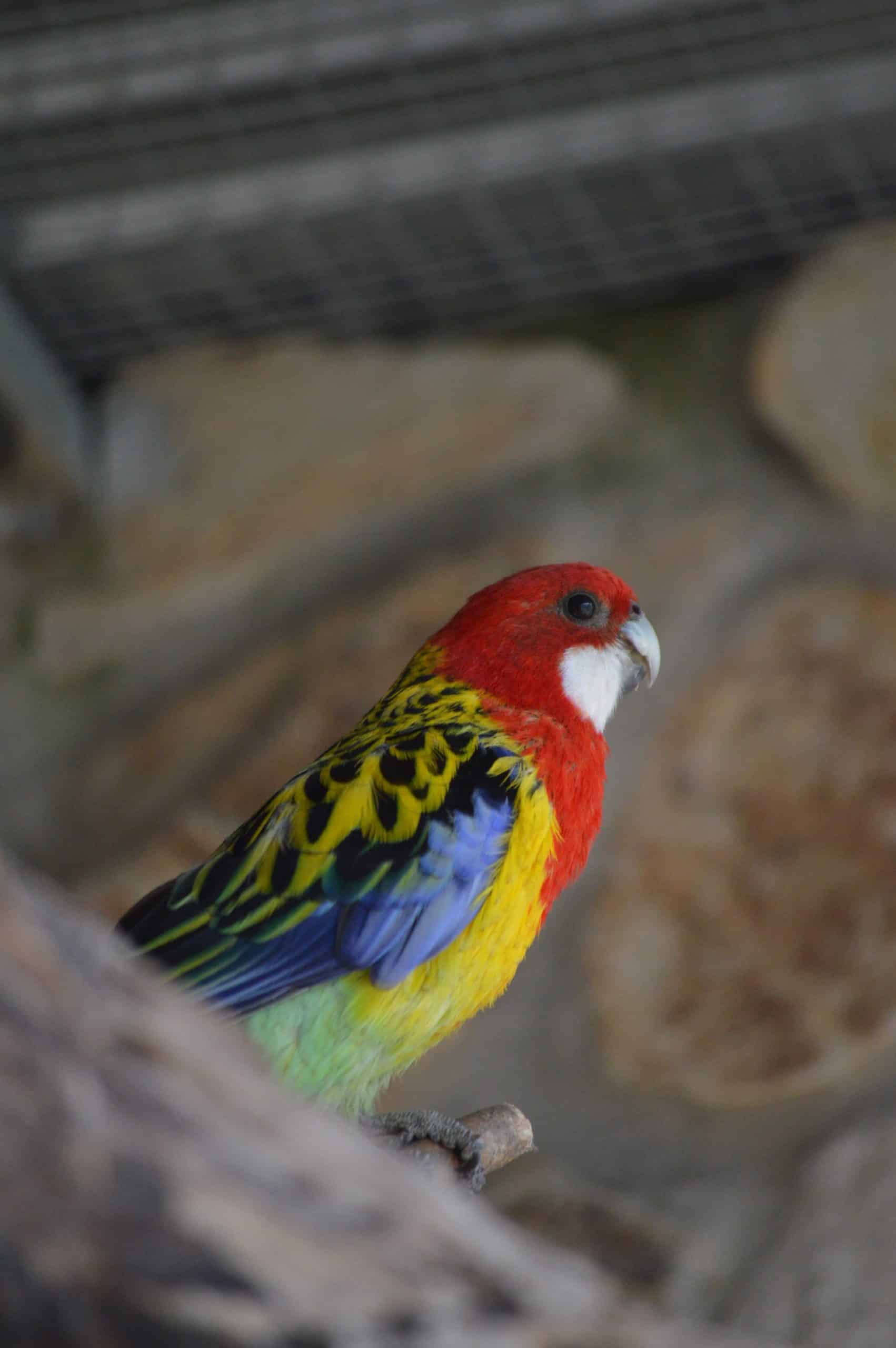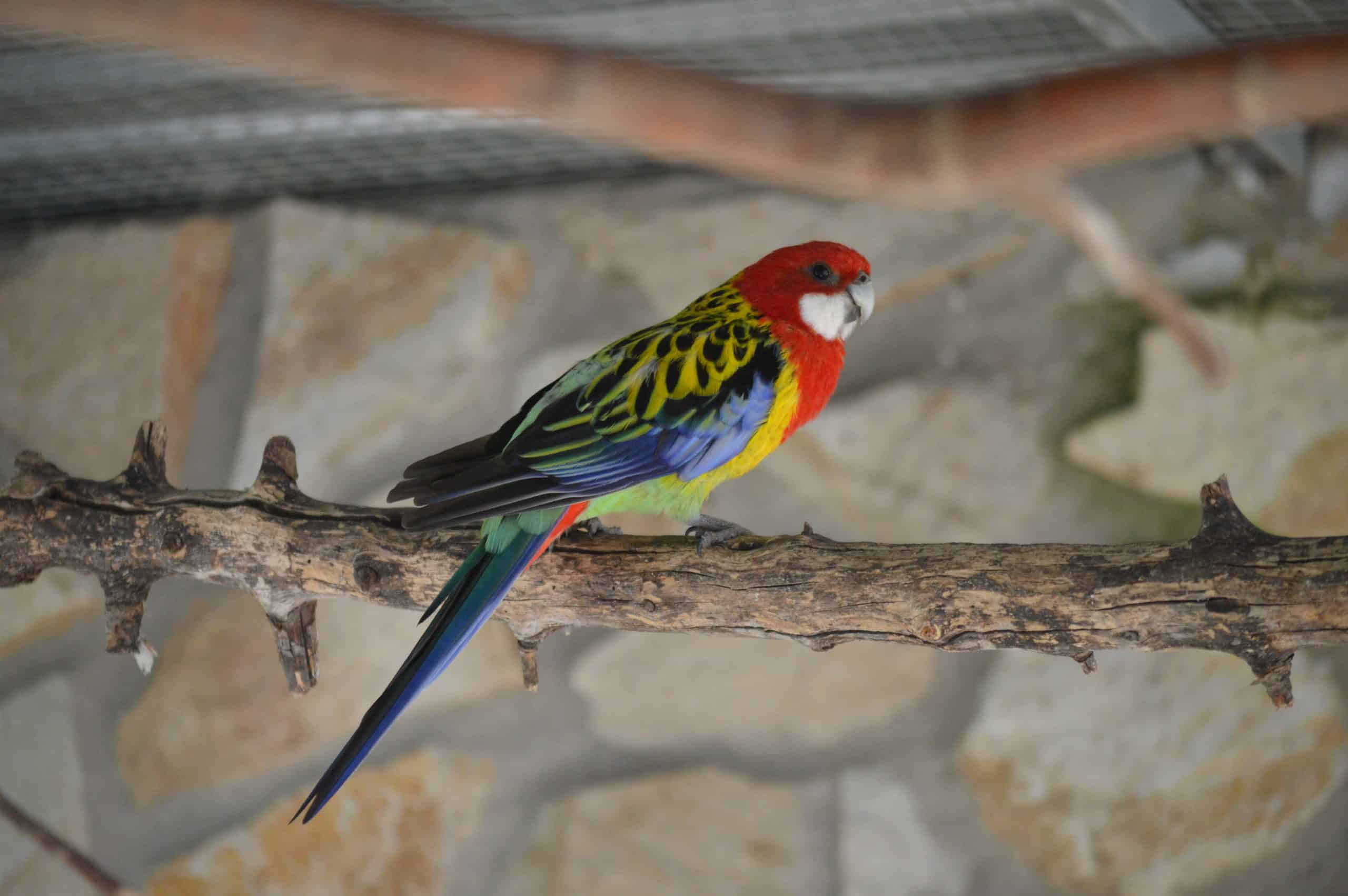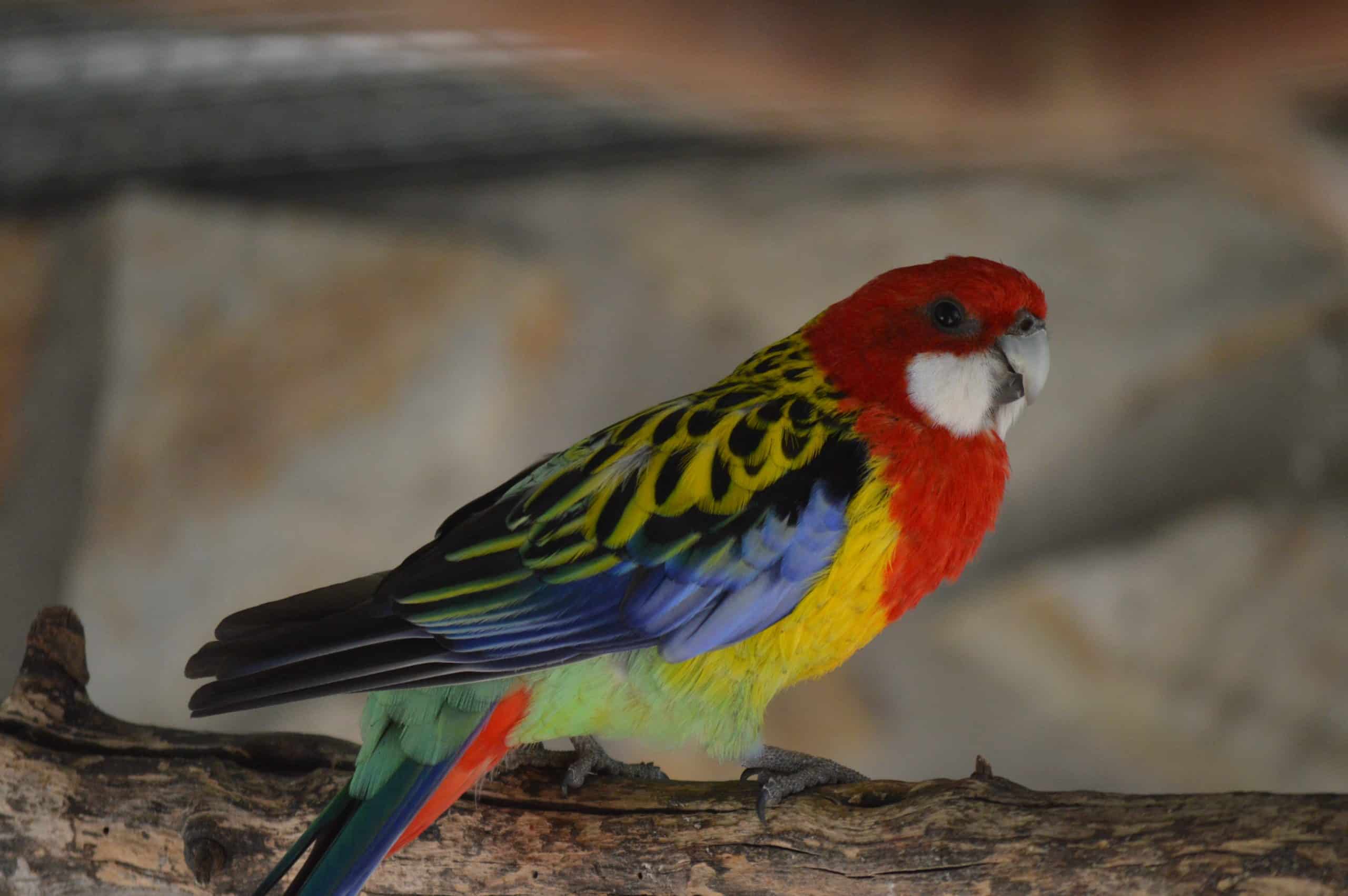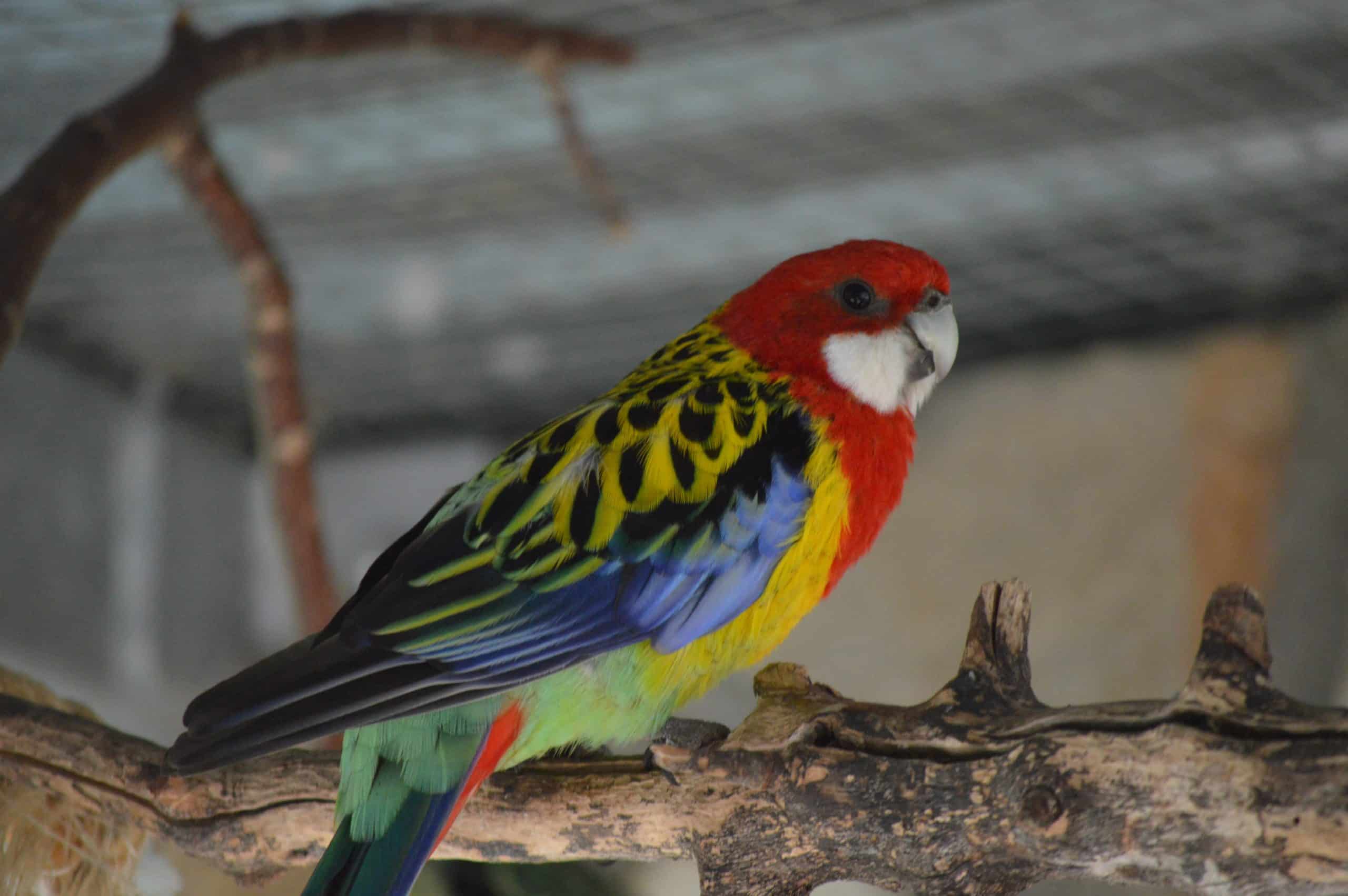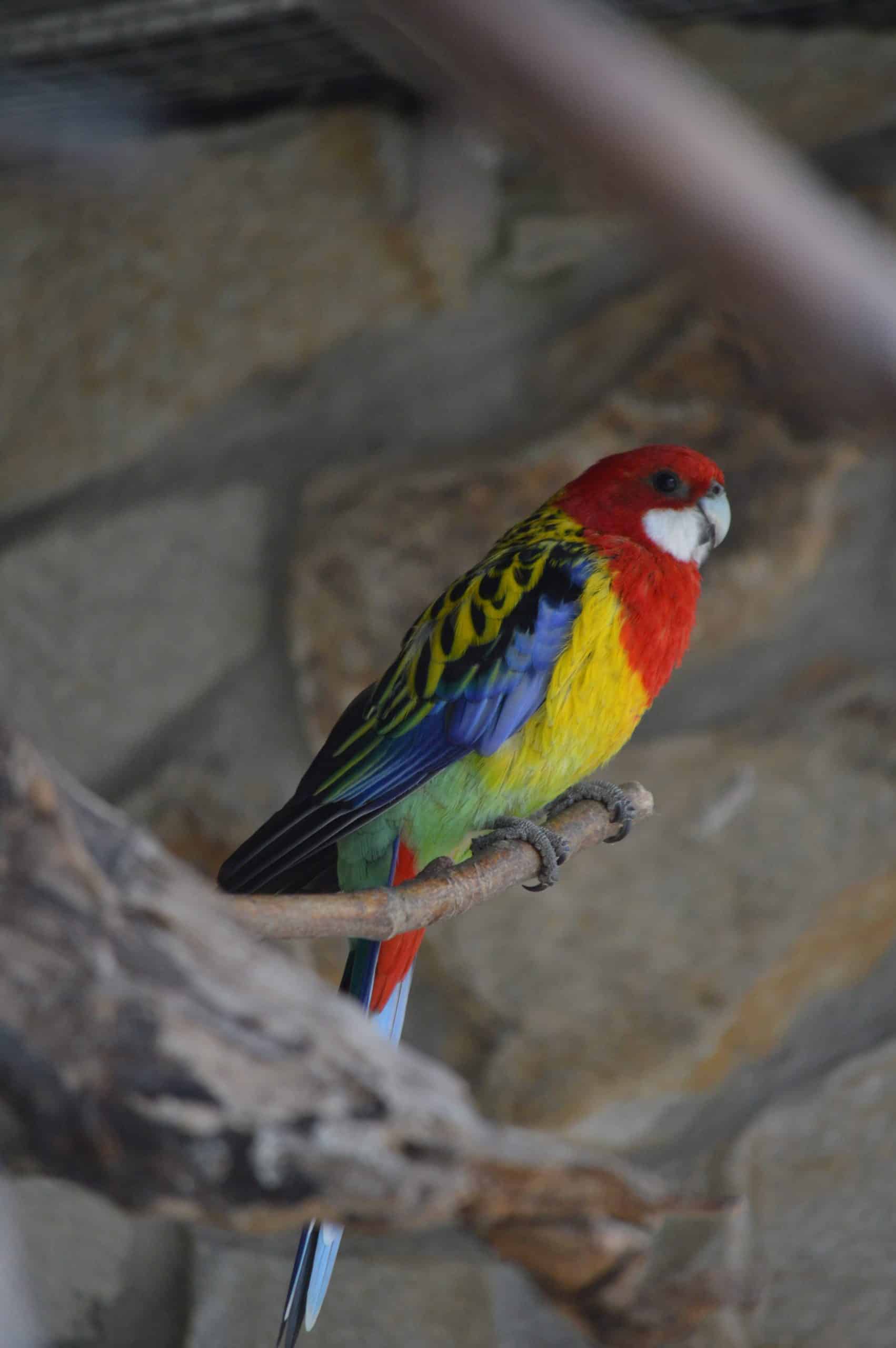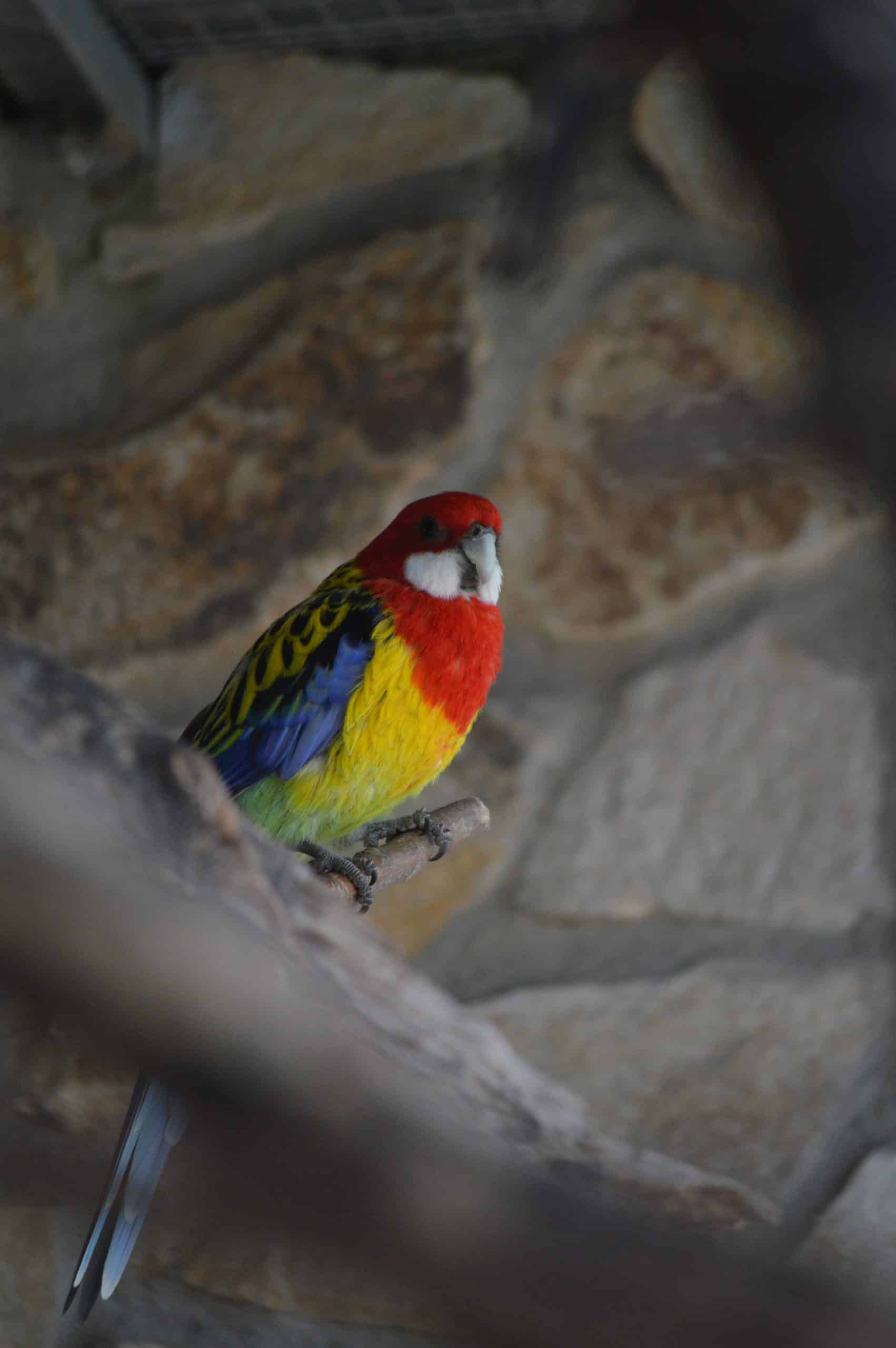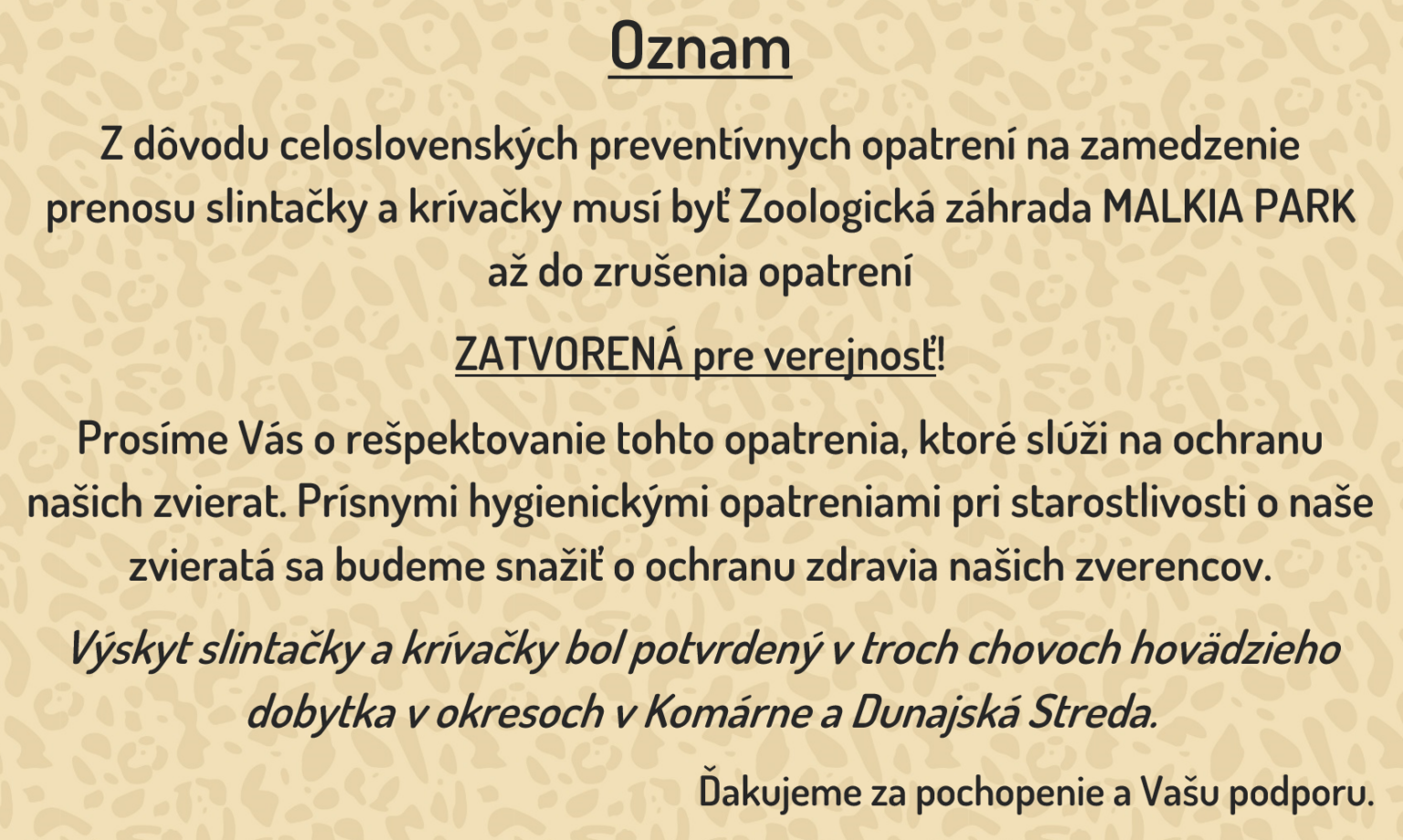He has a red head and white cheeks. The bill is pale and the irises brown. The upper part of the chest is red and the lower part is yellow. Gradually through the abdomen it changes to light green. The feathers on the back and shoulders are black and have yellowish or greenish edges, resulting in a scalloped appearance that varies slightly between subspecies and sexes. The wings and lateral tail feathers are bluish, while the tail is dark green. The legs are grey. The female is similar to the male, although she is duller in colour and has a stripe under the wing, which does not occur in the adult male.
It prefers a more open landscape in the lowlands and at higher elevations up to 1250 metres. It can also be seen in towns, parks and gardens, or in orchards and farms.
Partners stay together for life. The female chooses and prepares a nesting site, usually a cavity in a eucalyptus tree (but sometimes she uses a nest box or other artificial site). They lay their eggs on a bed of decayed wood and the female incubates the eggs while the male feeds her regularly. After flying out of the nest, the chicks are fed by their parents until they become independent.
They are rather shy birds. They get used to humans better at a young age, with an older individual a lot of patience is needed. They like the company of the same species, are quiet parrots with a beautiful appearance and are excellent fliers, which has made them suitable for outdoor breeding in large aviaries in our conditions.
Different colour mutations have been bred.
